18 5G projects providing a vision for the future
UPDATED: 5G will fully enable the Internet of Things, transforming how we live, work, and play. These projects showcase what we can expect to see.
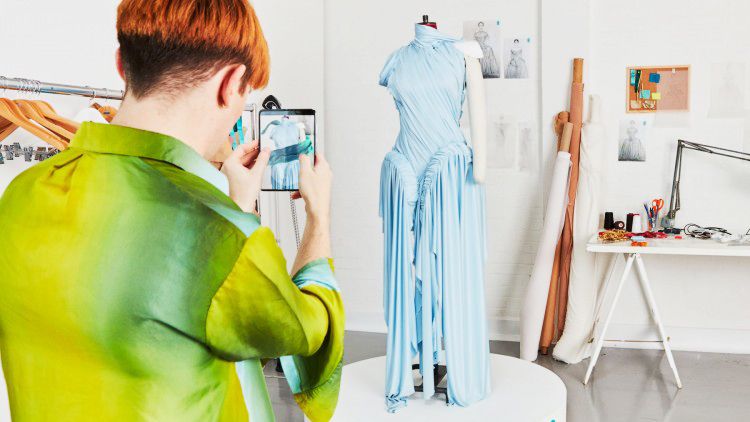
The Internet of Things (IoT) – and what it will enable – has been a discussion point for well over a decade, but the speed, low latency and reliability of 5G promise to bring the concept to life. Network slicing will allow a wide range of product types, with distinct reliability and throughput requirements, to be run out of the same architecture, and edge computing will allow nodes to communicate directly with one another, bypassing the network’s core and enhancing speed and reliability. These characteristics underpin some the most interesting projects currently making use of 5G, and have made a plethora of 5G use cases possible. Here are 18 of the best.
1. Untethered industrial robots
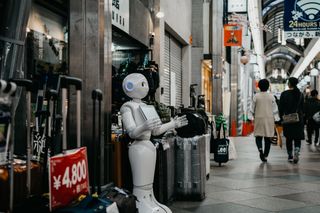
Robots are already widely used in factories, particularly in the automotive industry. However, 5G’s speed and low latency will ‘untether’ them, meaning they are physically free. Ericsson is currently collaborating with robot manufacturer Comau to develop fully automated untethered robots for use in an industrial setting. These robots will move in response to input from sensors rather than direct human control. Ultimately, they will make use of artificial intelligence and be multipurpose and intelligent enough to adapt, communicate and interact with each other. They will also be able to ‘personalise’ products, leading to more flexible production lines. The robots will work from a 3D image of a customised product (called a digital shadow), allowing them to optimise the manufacturing process by detecting quality issues and making continuous improvements.
2. Robots on farms
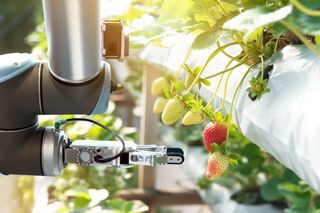
Untethered robots will be able to wander through fields determining, via interaction with sensors, which crops need more fertilizer or water, or which are suffering from disease. They might also be able to sift through images of fruit or vegetables using image processing software to determine whether produce is saleable or damaged. A company called FFRobotics has developed a ‘fresh fruit harvester’ that does exactly this. The company’s website states that these robots pick fruit ten times faster than a human harvester.
3. Robots in surgery
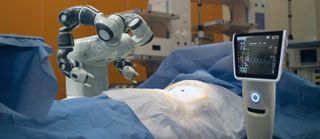
Untethered robots would help medical staff lift patients, or move beds and other equipment around the hospital, but perhaps more interestingly, they will also help with surgery. Surgeons located in a hospital will be able to conduct operations remotely. Telecoms company Ericsson is currently working with King’s College, London to develop haptic gloves enabling surgeons to do this. These gloves will be connected to a robotic intermediary located with the patient (perhaps inside a drone). The surgeon would view the operation via a virtual reality (VR) headset, as well as feel pressure transmitted from the robot to the gloves using vibrating motors. The technology relies on ‘edge computing’ systems (computation handled and stored locally) within the surgical device and the robot at either end of the 5G stream.
4. Virtual patient operations (telesurgery)
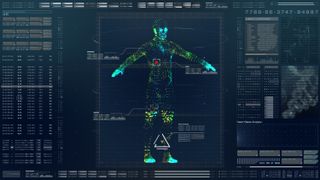
VR is one of several technologies that lends itself to medicine in interesting ways. Earlier this year, virtual reality software specialist, EchoPixel, launched a 3D viewer for use in diagnostics and surgical planning. This software converts 2D medical imaging data such as MRI and CT scans into VR images that float above an ordinary desktop. Doctors will be able to manipulate and dissect body parts from within the image. In time, haptic technology is likely to be used to make the different parts of the clone – skin, bone and tendon - feel differently to the surgeon, thereby guiding him in his work.
5. VR and palliative care
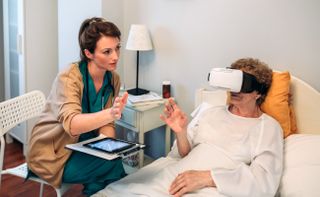
The low latency afforded by 5G provides far more potential for artificial and virtual reality applications than any previous iteration of the mobile network. AT&T and Vitas Healthcare are working together to combine on a VR product that aims to reduce anxiety and pain for the chronically ill. Patients will wear headsets and interact with scenes that aim to improve their mental health, this might include a walk through their home town or a visit to Machu Picchu in Peru.
6. AI in diagnosis

Artificial Intelligence (AI) is already being used for diagnosis of ailments. For example, in 2017 Stanford computer scientists used a computer vision tool to successfully diagnose early instances of skin cancer. The computers are provided with many thousands of images as well as mathematical functions and algorithms allowing them to extract meaningful patterns. 5G will increase take up of this technology, since it allows for real time rapid learning and calculations when assessing a patient’s symptoms. The government’s ‘industrial strategy’, has seen it open five new AI research centres in the UK (Leeds, Oxford, Coventry, Glasgow and London) focused on image analysis.
SIGN UP FOR E-MAIL NEWSLETTERS
Get up to speed with 5G, and discover the latest deals, news, and insight!
7. Self-driving vehicles
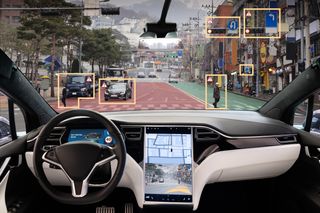
Ultimately, self-driving cars are another form of robot, and more than 40 manufacturers are working on robocars. Google’s is particularly interesting. It features a rotating roof top camera containing an array of 64 laser beams with a 200m range, these create images of hazards and other cars. A camera on the windscreen helps it see nearer-range obstacles such as pedestrians. Radars on the front and rear bumpers mean it is able to see cars in front and behind, and it will maintain a distance of 2-4 seconds at all times. An aerial at the rear receives information about the location of the car from GPS satellites. Mapping technology analysing road services, markers, signs and more, is recorded using an ordinary car and fed into the self-driving vehicle’s software. It also recognises signals and gestures, such as those used by cyclists for example. It will interpret these and slow down accordingly.
8. Drones
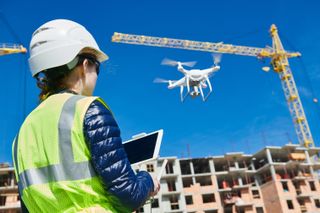
5G drones are already ubiquitous, but they will come into their own once they are 5G enabled. Although the regulation around air traffic safety is still to be agreed upon, sophisticated autonomous drones, designed for industrial, government and enterprise use, are already in production by manufacturers such as Percepto. These in-the-box-solutions can be programmed to carry out remote surgery, precision agriculture, defence activities, disaster recovery (following forest fires or other natural disasters), and inspection of difficult to reach infrastructure such as oil rigs, electrical systems or derelict buildings. They are likely to be rented ‘as a service’ by different sectors.
9. AR smart glasses and safety
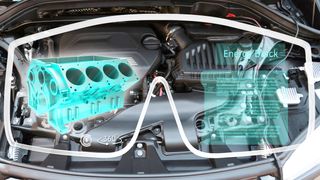
Augmented reality (AR) smart glasses will overlay the real world with useful information. Developers in this field argue that they make the entire world a desktop. There are many interesting examples of glasses of this sort, particularly those for use in an industrial setting. The ODG R-7 are AR smart glasses fitted with stereoscopic displays of 720p each, these are untethered and come with a variety of sensors. Off-site experts in an industrial setting will be able to see what an on-site person is seeing and AI can be used to retrieve step by step instructions around how to fix faults. One can easily see how this might be used by trainee mechanics or someone with a broken boiler in contact with a remote engineer. Miners or people working in dangerous environments might be warned of potential gas leaks by sensors communicating with their glasses. In a standard business context, these glasses will provide useful face recognition and travel guidance.
10. 5G on the underground

The Department for Media Culture and Sport is currently collaborating with various Korean institutions on a project called 5G RailNext to develop 5G infotainment services for public transport. The project will initially test the live deployment of infotainment mobile services using AR and mixed-reality content. The beta test will take place in a subway environment in Seoul and deliver travel information, video streaming and gaming through wearable devices such as headsets.
11. Robots fighting Covid-19
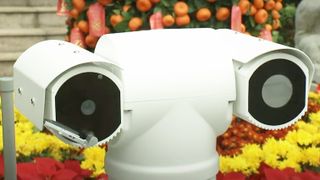
In recent weeks China has managed to ‘flatten the curve’ of its coronavirus outbreaks, reporting only a handful of new cases each day, and 5G technology is playing an integral part in the country’s battle against Covid-19.
One use of 5G tech, which has drawn particular attention is patrol robots, which are being used in busy areas such as airports to monitor citizens, and ensure that people are wearing face masks in public spaces.
The robots were developed by Guangzhou Gosuncn Robot Company, with additional support from IoT hardware and software specialist Advantech. And the robots have already been deployed in airports and shopping malls in cities such as Guangzhou, Shanghai, Xi’an and Guiyang.
12. 5G drone taxis
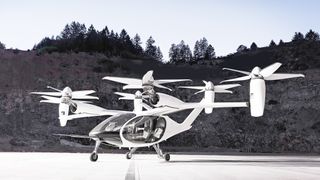
Getting to and from the airport to the city is time-consuming. So why not fly? A new generation of eco-friendly electric vertical takeoff and landing (eVTOL) aircraft – effectively ‘drones’ you can sit in – are now in advanced prototype stage. Developed by the likes of Airbus, Ehang, Volocopter, Kitty Hawk, Uber Elevate, Terrafugia and PAL-V, they’re pilot-less, autonomous, and have a range of about 50 miles. Potentially perfect for transferring quickly from airport to city, or from airport to airport – such as between Heathrow and Gatwick in London, or JFK and Newark in New York – these so-called ‘drone taxis’ require 5G-powered autonomous airspace identification, crash-avoidance and geofencing so they can’t enter sensitive areas. Expect 5G-enabled air taxis to go mainstream by 2030.
13. Virtually attend the Oscars

Visitors to Times Square had the opportunity to “walk the red carpet” at the Oscars earlier this year, using a 5G-enabled smartphone. Verizon created this world-first Oscars experience using the power of its Ultra-Wideband 5G network, which projected the red carpet experience to fans 2,500 miles away, in New York City.
The Verizon 5G portal transported fans from Times Square to the famous Dolby Theatre in Hollywood, where they were then able to see all of the live celebrity action unfold right before their eyes, as if they were standing on the red carpet themselves.
This was done by placing a Verizon 4K 360-degree camera on the Red Carpet. Using a 5G smartphone connected to Verizon’s 5G Ultra-Wideband network, which operates on a higher mmWave frequency with a wider spectrum bandwidth, fans stepped into a virtual portal that transported them to the real-time Red Carpet.
Once “on” the red carpet, viewers could control what they looked at thanks to a 360-degree camera. They could see the celebrities walk right past them in real-time, providing an innovative, new way to watch the Oscars.
14. Enhancing fashion with 5G

At the 2020 Bafta Awards MTV and Channel 4 presenter Maya Jama made a futuristic fashion statement, by wearing the world’s first 5G-powered augmented reality (AR) dress
The dress itself – a fashion first for 5G use cases – took British designer Richard Malone 250 hours to complete, and the final piece uses an array of technology to collect movement and positional data, which is then fed into an augmented reality app.
The 5G-enabled dress was able to digitally transform itself when viewed through an augmented reality app on a tablet device. And Richard Malone, designer of the 5G-powered AR dress, is already well-known for his unique pieces, which are renowned for pushing the boundaries of what can be achieved with fabric, and with this dress he went one step further.
The dress contained more than 12 full body-length wires and 18 sensor bulbs. To keep all of the technology hidden, it was hand sewn with more than 100,00 stitches. The sensors were tracked using the EE 5G network, allowing Jama and others to interact with the design using a smartphone.
15. Going underground
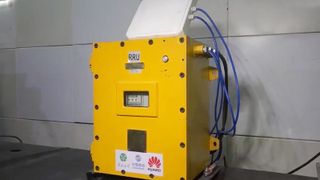
China Mobile and Huawei managed to take next generation networking 500 meters underground, in a 2020 partnership with China’s largest hard coal producer, Yangquan Coal Industry.
According to Chinese news outlets, the 5G network in Yangquan’s subsidiary, Xinyuan, is the country’s first commercial 5G service to be completed under a coal mine shaft. And the partnership between China Mobile and Huawei is expected to reduce its labour force in one underground team from more than 170, to about 90, whilst maintaining the current levels of coal output.
This is only the first step in a long process, though, as the mining company is implementing 5G networking with a view to introducing its first “smart mine” in the next few years.
And Yangquan Coal Industry Group is not alone in embracing the new technology. According to Liu Feng, Vice Chairman of the China National Coal Association, China now has more than 5,000 coal mines, which have built more than 200 intelligent mining platforms facilitated with automated equipment. And 5G networks will be integral to the development of smart mining within China.
16. Monitoring forests with 5G
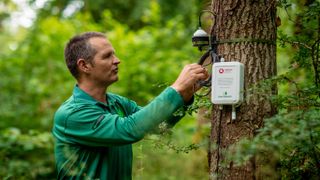
In 2020, Vodafone announced a partnership with the Department for Environment, Food and Rural Affairs (Defra) and Forest Research - Britain’s foremost forestry and tree research organisation - to use a Narrowband-IoT (NB-IoT) network to monitor two forests in Surrey and Northumberland.
The two networking technologies that will power the industrial Internet of Things over the next five years are narrowband IoT (NB-IoT) and Cat-M (officially known as LTE Cat-M1). And it’s predicted that industrial IoT use cases will overtake the likes of wearables, home security, and digital home products, by 2025.
This pilot will use NB-IoT technology, future-proofed to work on 5G networks when available, to monitor how trees respond to environmental changes within the UK’s forests.
17. Driverless 5G shuttle for football fans
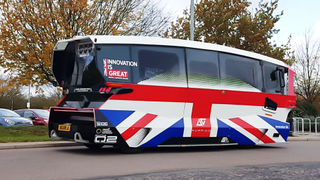
Aurrigo, an autonomous vehicle company based out of Coventry in the UK, has been selected as a partner in the £4m Milton Keynes MK 5G Create project, and will manufacture and operate a ten-seater shuttle running a short autonomous route from Bletchley train station to MK Dons Stadium.
Aurrigo, which has already completed a successful driverless vehicle trial in the town, having previously delivered autonomous vehicles for the Welsh Open golf competition last year. For this trial, Aurrigo will join forces with Milton Keynes Council, MK Dons, BT and five other consortium partners to test out how 5G applications can create a world class visitor experience.
The company will manufacture and operate a ten-seater shuttle running a short autonomous route from Bletchley train station to MK Dons Stadium, together with two pods operating around the retail park perimeter.
18. Delivery bots
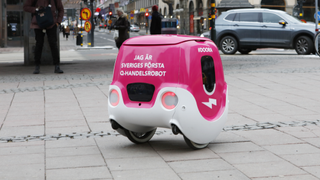
Tele2, one of Sweden’s leading mobile network operators, became the first company in Sweden’s Stockholm area to launch a 5G network in 2020, and it has announced that a new 5G robot pilot scheme will be available via that network, which it hopes will make automated deliveries commonplace across Sweden.
The pilot, launched in conjunction with online meal delivery service, Foodora, will use delivery droids, affectionately referred to as Doora, to carry out home deliveries in Stockholm.
Doora has a camera that sends information via 5G in real time to Foodora, which can track and trace the robot, while quickly sending data to and from Doora, which the company hopes will provide a seamless experience for customers when using the service.
Doora will be tested around Stureplan, and will be used to transport both food and other products, weighing up to 20 kg. And it is hoped that Doora, with a top speed of 6km/h, and an eight-hour battery life, will be seen in cities across Sweden following the trial.
Nicola Brittain is a freelance journalist with expertise in technology, telecoms, media and finance. She worked as news and analysis editor at Computing Magazine, and more recently has freelanced for Diginomica, Investment Week and Portfolio Adviser. She is currently writing a novel.
